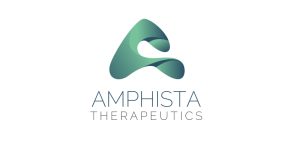Press Release.

Multiple Clinical Complete Responses Demonstrated Following Single Low Dose Administration of Bel-sar in Patients with Non-Muscle-Invasive Bladder Cancer (NMIBC) in Ongoing Phase 1 Trial
Clinical Complete Responses Observed in 4 out of 5 Patients in Subset of Patients with Low Grade Disease; Evidence of Bladder Urothelial Field Effect in Non-Target Tumors
Favorable Safety Profile Observed; Only Grade 1 Drug-Related Adverse Events Reported in Less Than 10% of Patients
Aura Hosting Virtual Urologic Oncology Investor Event with Key Opinion Leaders at 4.30 pm ET Today
BOSTON, Oct. 17, 2024 (GLOBE NEWSWIRE) — Aura Biosciences, Inc. (NASDAQ: AURA), today announced positive early data from an ongoing Phase 1 clinical trial of bel-sar (AU-011) in patients with NMIBC. To date, the trial includes 13 patients, with the primary endpoints of evaluating the safety and feasibility of local administration of bel-sar alone (n=5) and bel-sar with light activation (n=8). The secondary endpoints are to evaluate biological activity and immune mediated changes in the tumor microenvironment (TME). 10 of 13 study participants had low grade disease, approximating the 70% incidence of this patient population among all NMIBC patients. The other 3 study participants had high grade disease. In patients receiving bel-sar with light activation (n=8), 4 out of 5 patients with low grade disease demonstrated a clinical complete response with no tumor cells remaining on histopathological evaluation. 2 out of 3 patients with high grade disease demonstrated visual tumor shrinkage observed on cystoscopy. Aura will host a Virtual Urologic Oncology Investor Event at 4:30 pm ET today.
“We are highly encouraged by this positive early data, which shows that bel-sar has the potential to be a transformative cancer treatment,” said Sabine Brookman-May, MD, FEBU, Senior Vice President, Therapeutic Area Head Urologic Oncology of Aura Biosciences. “A potentially differentiating aspect of this novel treatment is the rapid tumor response accompanied by an immune oncology (IO) effect such as a marked CD8+ T-cell infiltration observed in just a matter of days with a single low dose. We believe this could have the potential to translate into a durable response. In parallel with expanding the ongoing Phase 1 trial, we are preparing for a Phase 2 trial to further evaluate bel-sar’s clinical activity and durability of response.”
“Bel-sar has the potential to change the treatment paradigm for NMIBC,” said Neal Shore, MD, FACS, Medical Director, Carolina Urologic Research Center, AUC Urology Specialists. “Based on this early data, bel-sar’s positive clinical activity and evidence of a bladder urothelial field effect with a single dose, may position bel-sar to be the first immune ablative treatment option for early-stage bladder cancer patients delivered with an in-office procedure.”
Bel-sar is a virus-like drug conjugate, designed to have a dual mechanism of action, that induces direct tumor cell necrosis and elicits a robust and durable anti-tumor immune response.
Trial Design: The ongoing Phase 1 trial (NCT05483868) is a two-part, open-label clinical trial, designed to assess the safety and feasibility of bel-sar as a monotherapy. The study treatment is administered 7 to 12 days before the scheduled transurethral resection of bladder tumor (TURBT), the standard of care procedure. The participants are followed for safety monitoring over a 56-day period. The trial is also evaluating bel-sar’s biological activity with histopathological evaluation of tissue samples collected at the time of TURBT (regardless of tumor response) with evaluation of focal necrosis and immune changes in the tumor microenvironment. Part 1 (n=5) of the trial is complete, with patients receiving a single bel-sar dose without light activation. Part 2 (n=10) of the trial is ongoing. 8 patients with a confirmed tumor at time of treatment have received either 100ug or 200ug of bel-sar as a single dose. Of these 8 patients, 5 had low grade disease and 3 had high grade disease. 7 of these 8 patients had a history of recurrent bladder cancer and had undergone multiple TURBTs and adjuvant treatments such as Bacillus Calmette-Guerin (BCG), mitomycin, gemcitabine, cetrelimab and tamoxifen prior to trial enrollment. In the Phase 1 trial expansion, Aura plans to test additional doses and treatment regimens.
Safety Data: In the safety analysis as of the September 9, 2024 data cut-off date (n=12), bel-sar was well-tolerated, with less than 10% of patients reporting Grade 1 and no Grade 2 or higher drug-related adverse events reported. No serious adverse events have been reported. No significant differences between the light-activated and non-light activated cohorts have been observed.
Biological Activity: The data in these 8 patients receiving bel-sar with light activation showed clinical activity detectable as soon as 7 days after a single low dose of bel-sar with light activation. This was demonstrated by histopathological evidence of clinical complete response, necrosis, immune activation or visual tumor shrinkage observed on cystoscopy. For this analysis, “clinical complete response” was defined as the absence of tumor cells on histopathologic evaluation. Of the patients with low-grade disease, 4 out of 5 exhibited a clinical complete response (1 of 4 based on local pathology with central review ongoing), with no tumor cells detected in histopathological evaluation post-treatment in the target and in several non-target bladder tumors. 2 of 3 of the patients with high grade disease demonstrated visual tumor shrinkage observed on cystoscopy, while tumor cells were still present on histopathological evaluation. Immune activation was noted in all patients in both treated target and untreated non-target bladder tumors with infiltration of effector CD8+ and CD4+ T-cells (where immune staining was available). This data provides evidence of a bladder urothelial field effect with a single low dose of bel-sar with light activation, potentially indicating a broader immune response in the bladder beyond the target tumor in these patients.
Aura Virtual Urologic Oncology Investor Event
Aura will host a Virtual Urologic Oncology Investor Event featuring Max Kates, MD (Johns Hopkins), Joe Jacob, MD (Syracuse University), Neal Shore, MD (Carolina Urologic Research Center) and Gary Steinberg, MD (RUSH University) to discuss the early Phase 1 data on Thursday, October 17, 2024, at 4:30 pm Eastern Time. To register for the event, click here. A live question and answer session will follow the formal discussion.
The live webcast of Aura’s Virtual Urologic Oncology Investor Event will be available on the “Investors & Media” page under the “Events & Presentations” section of Aura’s website at https://ir.aurabiosciences.com/events-and-presentations, where a replay of the webcast will be archived for 90 days following the presentation date.
About Aura Biosciences
Aura Biosciences is a clinical-stage biotechnology company focused on developing precision therapies for solid tumors that aim to preserve organ function. Our lead candidate, bel-sar (AU-011), is currently in late-stage development for primary choroidal melanoma and in early-stage development in other ocular oncology indications and bladder cancer. Aura Biosciences is headquartered in Boston, MA. Our mission is to grow as an innovative global oncology company that positively transforms the lives of patients.
For more information, visit aurabiosciences.com. Follow us on X (formerly Twitter) @AuraBiosciences and visit us on LinkedIn.
Forward-Looking Statements
This press release contains forward-looking statements within the meaning of the Private Securities Litigation Reform Act of 1995, as amended, and other federal securities laws. Any statements that are not statements of historical fact may be deemed to be forward-looking statements. Words such as “may,” “will,” “could,” “should,” “expects,” “intends,” “plans,” “anticipates,” “believes,” “estimates,” “predicts,” “projects,” “seeks,” “endeavor,” “potential,” “continue” or the negative of such words or other similar expressions can be used to identify forward-looking statements. These forward-looking statements include express or implied statements regarding Aura’s future expectations, plans and prospects, including, without limitation, statements regarding the therapeutic potential of bel-sar for the treatment of cancers including bladder cancer; statements regarding Aura’s plans and expectations for the ongoing Phase 1 and future trials of bel-sar for bladder cancer; statements regarding Aura’s beliefs and expectations for bel-sar’s ability to provide durable responses in bladder cancer patients; statements regarding Aura’s expectations for an improved quality of life of patients after treatment with bel-sar and changes to the treatment paradigm for patients; statements regarding Aura’s beliefs and expectations for the high unmet medical need for an effective local treatment in urologic oncology; and statements regarding Aura’s expectations for the estimated patient populations and related market opportunities for bel-sar.
The forward-looking statements in this press release are neither promises nor guarantees, and investors should not place undue reliance on these forward-looking statements because they involve known and unknown risks, uncertainties and other factors, many of which are beyond Aura’s control and which could cause actual results to differ materially from those expressed or implied by these forward-looking statements, including, without limitation, uncertainties inherent in clinical trials and in the availability and timing of data from ongoing clinical trials; the expected timing for submissions for regulatory approval or review by governmental authorities; the risk that the results of Aura’s preclinical and clinical trials may not be predictive of future results in connection with future clinical trials; the risk that early data from ongoing clinical trials may not be predictive of final data from completed clinical trials; the risk that governmental authorities may disagree with Aura’s clinical trial designs; whether Aura will receive regulatory approvals to conduct trials or to market products; whether Aura’s cash resources will be sufficient to fund its foreseeable and unforeseeable operating expenses and capital expenditure requirements; Aura’s ongoing and planned preclinical activities; and Aura’s ability to initiate, enroll, conduct or complete ongoing and planned clinical trials. These risks, uncertainties and other factors include those risks and uncertainties described under the heading “Risk Factors” in Aura’s most recent Annual Report on Form 10-K and Quarterly Report on Form 10-Q filed with the United States Securities and Exchange Commission (SEC) and in subsequent filings made by Aura with the SEC, which are available on the SEC’s website at www.sec.gov. Except as required by law, Aura disclaims any intention or responsibility for updating or revising any forward-looking statements contained in this press release in the event of new information, future developments or otherwise. These forward-looking statements are based on Aura’s current expectations and speak only as of the date hereof and no representations or warranties (express or implied) are made about the accuracy of any such forward-looking statements.
Investor Contact:
Alex Dasalla
Head of Investor Relations and Corporate Communications
Media Contact:
Kimberly Ha
KKH Advisors
917-291-5744




